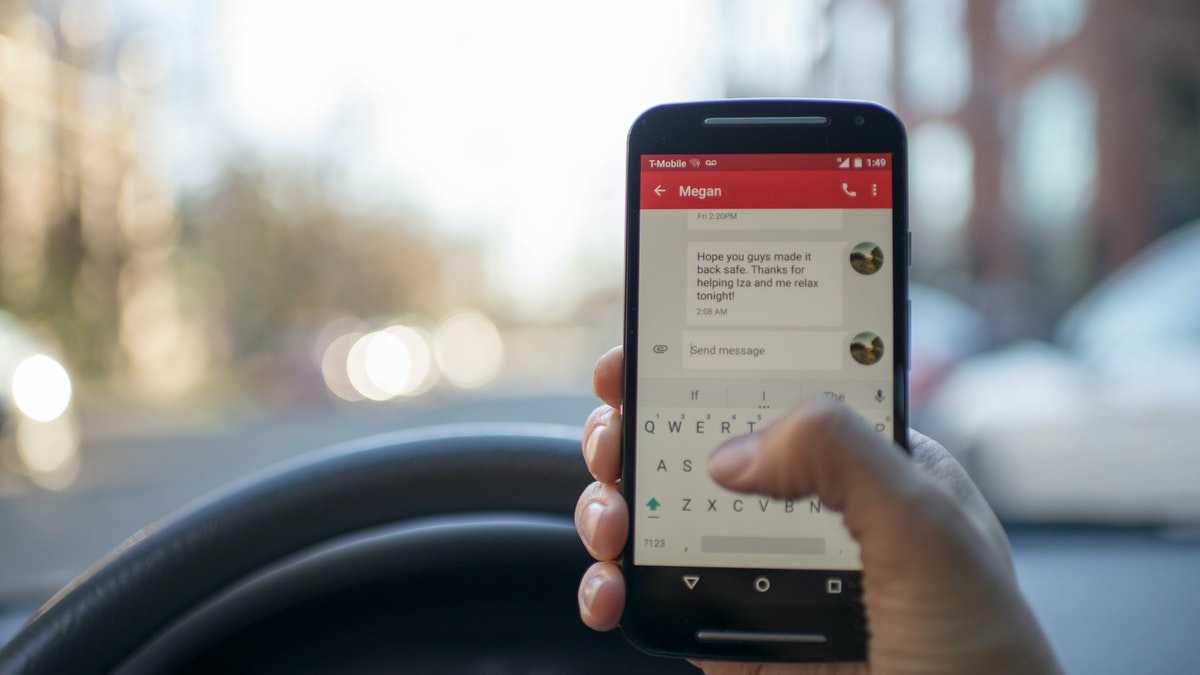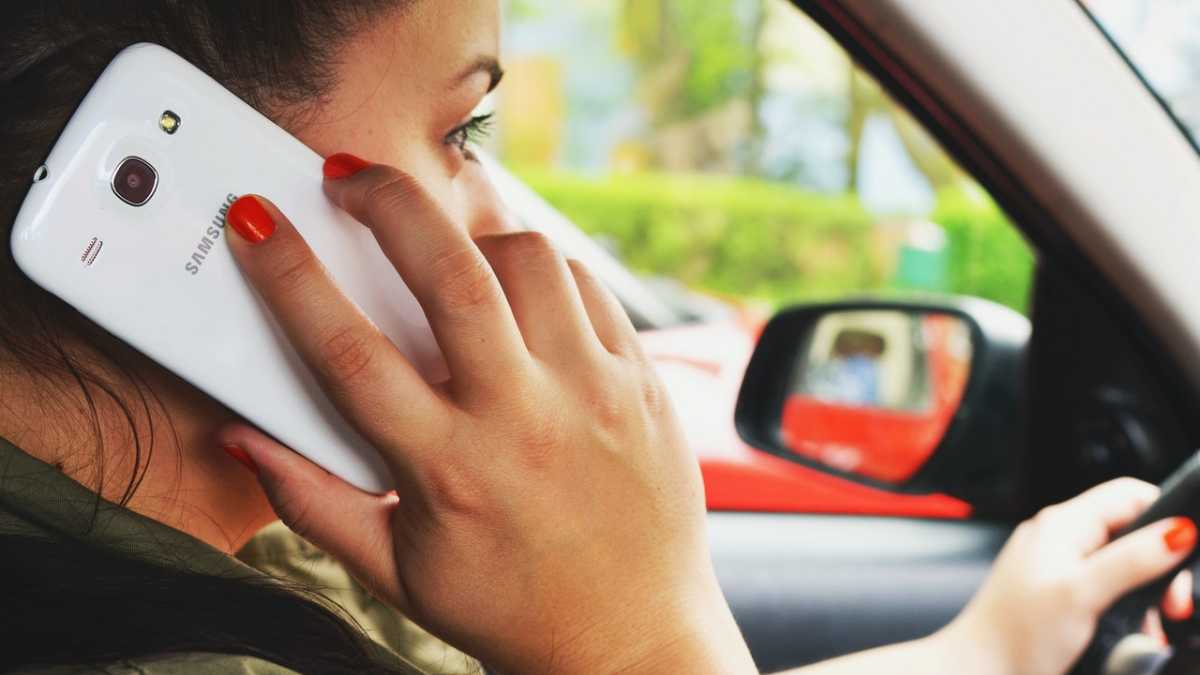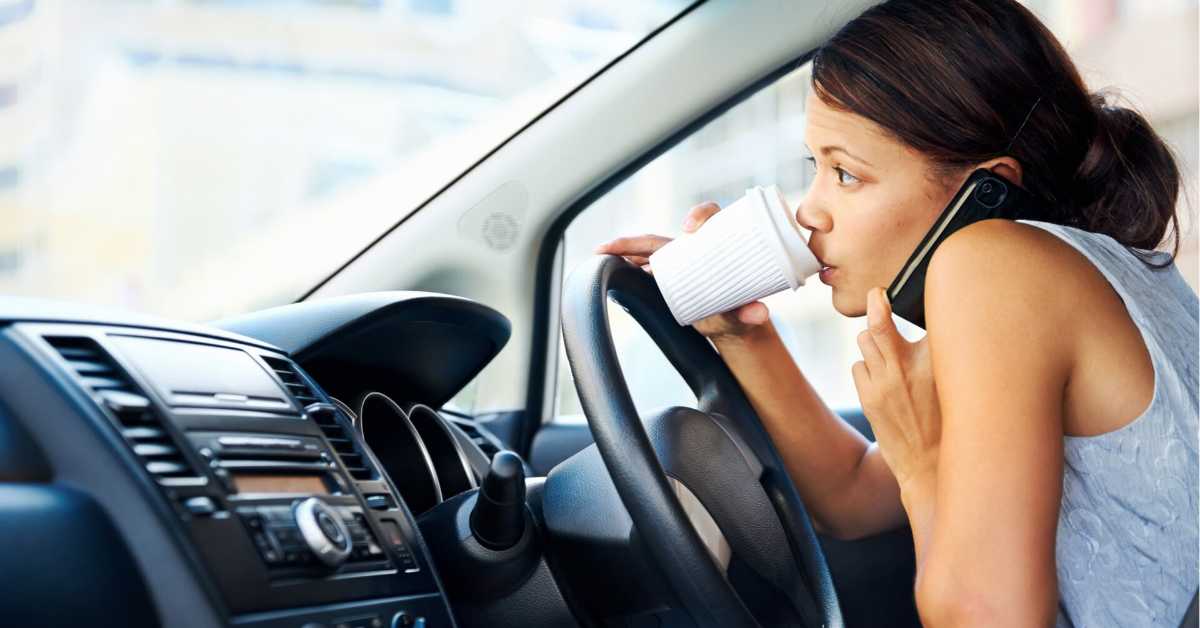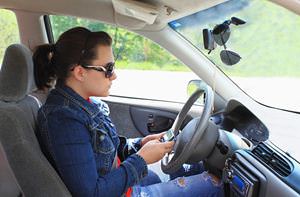
A report by the National Highway Traffic Safety Administration showed that one in five car accidents were the result of a distracted driver, and as many as 16 percent of all car-accident deaths were also related. This statistic is tragic as many of those deaths could have been avoided.
The world is a very distracting place, and the amount of possible distractions seems to be constantly on the rise. No longer are crying babies, spilled coffee and interesting roadside spectacles the only things that can draw your eyes away from the road. There are now smartphones, social media updates, in-car entertainment systems and GPS apps as well. Being aware of the major driving distractions can help you do your best to avoid them.
Distracted Driving Statistics
Every day in the United States, more than 9 people are killed in crashes involving a distracted driver, and 1,060 people are injured in crashes involving distracted drivers. About 3,300 people are killed in crashes involving a distracted driver each year, and 18 percent of crashes in which someone is injured involves a distracted driver.
There are three main types of driving distractions.
- The first is visual, in which a driver takes his or her eyes off the road.
- Manual distractions involve a driver taking his or her hands off the wheel.
- Cognitive distractions occur when the driver takes his or her focus off of driving.
Texting while driving is one of the most dangerous (and contributing) factors to automobile crashes and fatalities. Texting while driving combines all three types of distractions; it takes a driver’s attention and visual focus away from the road for an average of 4.6 seconds. At 55 mph, that’s the equivalent of driving the length of an entire football field, distracted!
Avoiding Distractions While Driving

One of the hardest parts about being a new driver in today’s world is avoiding the many distractions that come along with it. With a steady stream of new technologies readily available, it’s important to learn how to keep your focus on the road. Teens are especially susceptible to these types of distractions, and because you may have little experience driving, it’s imperative to minimize risks. Here are some of the ways you can do so:
Do not drive while upset or highly emotional
When your mind is on other parts of your life, it’s hard to keep your attention focused on the road. If you find yourself upset or angry while driving (related to a driving incident or otherwise), it’s important to pull off of the road and refocus your energy. Close your eyes, take several deep breaths, and try your best to relax.
If you can’t focus on the task at-hand, try taking a short walk or drinking some water. Just make sure you have time to settle down before hitting the road again. If you find yourself feeling hurried or rushed before you start your journey, take a bit of time to relax before leaving. You’ll be less likely to speed and become frustrated with careful drivers or heavy traffic.
If road rage is the cause of your distress, be sure to keep all rude or hostile gestures to yourself. This will only make the situation worse. Also, be sure to acknowledge your errors with other drivers by making apologetic gestures.
If you feel tired or drowsy, pull off the road as soon as possible
Drowsiness is one of the leading factors in auto crashes each year. Try to take a short nap or walk to regain some energy. It’s not a good idea to try to get to your destination at a faster rate. This could lead to speeding tickets or an accident. If necessary, buy a coffee or other caffeinated drink (like tea), to help you stay awake. Be sure to finish your beverage before getting back on the road.
Try not to eat and drive at the same time

It may not seem like grabbing a quick snack is distracting, but if you have to take your eyes away from the road to do so, you’re putting yourself and others in danger. If you have an easily accessible snack that you can grab and eat without looking away from the road, go ahead and do so. However, if you have to dig around in your glove box, open a wrapper, grab a straw or otherwise use your hands, wait until you can stop or have a friend do it for you.
Do not use your cell phone while driving
Whether you’re thinking about taking/making a call or texting, cell phone use is one of the most common distractions in a vehicle today. In many states, talking on or texting on your cell phone is illegal unless you pull over on the side of the road. If you are caught doing either while driving, you could receive a fine. Cell phones should be used for emergency situations only, and you should still pull off the road in these cases. Even hands-free cell phone calls can be distracting, as they can cause you to miss important audio and visual cues on the road.
Cell phones are the leading cause of distracted driving. Research conducted at the University of Utah showed that cell phones can affect a driver as much as being moderately drunk. Taking your eyes off the road for even a few seconds can easily result in a crash, and it takes the average cell phone user as long as four seconds to send a text. In four seconds, your car could travel the length of a football field.
Clearly, the only way to protect yourself is to refuse to use your phone while driving. If you don’t feel that you have enough self-control do to this, put your phone in a place you can’t reach it. Don’t worry about your messages. They will be waiting for you when you arrive.
Try not to use any technologies while driving
From adjusting your radio to using your GPS app multi-tasking while driving is never a smart choice. If you must use a GPS system, keep it as close to your driving gaze as possible, which is usually a 30-degree field of view from the windshield. However, it’s best to know where you’re going before starting your journey. Review your map(s)/ GPS app as much as possible before leaving.
You should also familiarize yourself with your vehicle’s controls before starting your journey (such as your wipers, cruise control, headlights, and turn signals) so that you will not become frustrated or confused while driving.
GPS apps are wonderful tools, but it won’t serve you very well if it distracts you enough to cause an accident. If you need your GPS to guide you somewhere, be sure to set it up before you leave rather than punching in your destination when you’re halfway there. If all else fails, pull into a parking lot and figure out where you’re going.
Do not attempt grooming practices while driving
This includes combing/brushing your hair, shaving, putting on makeup, and taking off your coat or changing clothes.
Keep your music at a reasonable volume
Music that is too loud cannot only earn you fines in a community setting but can also distract you from the road. Using earplugs and headphones is also a dangerous choice. Loud music leads you to miss important audio cues and to miss hearing emergency vehicles with which you are sharing the road.
Most of the time, you can change your radio station or change your playlist without taking your eyes off the road. However, it only takes one mistake to cause an accident that could change your life forever. This isn’t to say that you can’t touch your radio, but if you have to do something that requires eyesight, wait until you are stopped at a light.
Do not read while driving
Yes, it does happen. If you need to reference a road map, pull off the road to do so.
Try not to smoke while driving
This may be a tough feat to accomplish for dedicated smokers who find smoking while driving to be relaxing, but they should be avoided. When a driver is distracted by falling ashes, he/she is at higher risk for a collision.
Limit the number of passengers inside your vehicle
If possible, limit the number of persons and the amount of activity within your vehicle. Talking, singing, and other activities in which passengers engage can be very distracting for a driver. Many states even require teenage passengers to leave their friends at home during their first few months of driving.
When driving with friends, teens often pay more attention to them than they do to the road. If passengers are distracting you while you’re driving, don’t be afraid to speak up. Being momentarily embarrassed is much better than getting into an accident.
Passengers have a lot of potential to distract you as a driver. They ask you questions, point to things alongside the road and encourage you to look at them without even meaning to. As the driver, it’s your job to ignore your passengers if you think interacting with them will cause you problems. Regular chit-chat is fine, but avoid getting into heavy discussions, taking part in horseplay or responding to any demands that you look at something.
Secure all passengers and equipment
If you’re chauffeuring your smaller siblings, make sure they are buckled up properly and provided with age-appropriate toys and books. If you’re bringing a pet along, make sure he/she is safely secured in a harness or pet carrier (preferably the latter). A soft carrier is best, as a hard carrier can shatter during an accident.
Also, be sure to prioritize your equipment according to when and how you’ll use it during your travels. Put the most important (most frequently used) items nearest to you and the least important farther away. The most effective way to prioritize your equipment is by taking advantage of all of the storage compartments surrounding you, such as the middle console and the side door pocket. You can also store items in the glove compartment to be handed to you by a helpful passenger.
Texting While Driving

The invention of smartphones has brought a number of wonderful things to society. We now have easily accessible GPS systems, mobile Internet and the ability to take pictures, record video, make a phone call or text at any time. However, with every positive there comes a negative, and the negative aspect of phone use is that it increases the chances of automobile accidents.
Over 23 Percent of Accidents Involved Phones
If you have been paying attention to the news, you’ve probably noticed the increasing number of tragic stories involving accidents that could have been prevented. Driving has always been a dangerous activity, but the creation of cell phones has made the roads a much more dangerous place.
Risking your own life would be bad enough, but think how you would feel if you were to hit and kill a child? If you were physically injured, you would have the chance of recovery, but if you needlessly took a life, you would probably have a very difficult time forgiving yourself. No text, webpage or email could ever be worth that.
Texting Takes Your Attention Away From The Road For up to Five Seconds
If you’re traveling 55 miles per hour, you could cross an entire football field in five seconds. Imagine how many variables you could encounter while traveling such a distance. It isn’t safe to look away from the road for any amount of time.
Smart Phones Make a Crash 23 Times More Likely
There are a lot of things that can distract you from the road, such as talking to your passengers, being emotionally upset, being tired or reaching for something in the backseat. However, studies have shown that texting or looking at the Internet while driving presents the most risk.
Other People Believe They Can Safely Text and Drive
A disturbing 77 percent of young drivers claim that texting and driving is easy and safe for them. If you believe the facts, then you know that they are wrong, and this makes it even more important for you to put down your own phone and pay attention. With the growing number of unsafe drivers on the road these days, defensive driving is more crucial than ever. Always keep your eyes open and be prepared to encounter someone who isn’t paying attention.
It’s Illegal to Use a Phone While Driving
Even if you aren’t concerned with your own life or the lives of others, you probably won’t be happy to have to shell out your hard-earned cash for a ticket. Using a smartphone to text or surf the web while driving is now illegal in 39 states. Even if these laws don’t yet exist in your state, chances are they soon will, so it’s better to get used to putting your phone away.
When you honestly look at the risks, texting while your driving probably doesn’t seem as important as it once did. You may think that you know what you’re doing, but you should ask yourself how much you really trust your own abilities. No one is perfect, and you are just as capable of making a mistake as the next person. Do the right thing and commit to putting your smartphone away while at the wheel.
By raising awareness of this important issue we hope to do our part in helping drivers understand the importance of remaining focused and safe on the road.